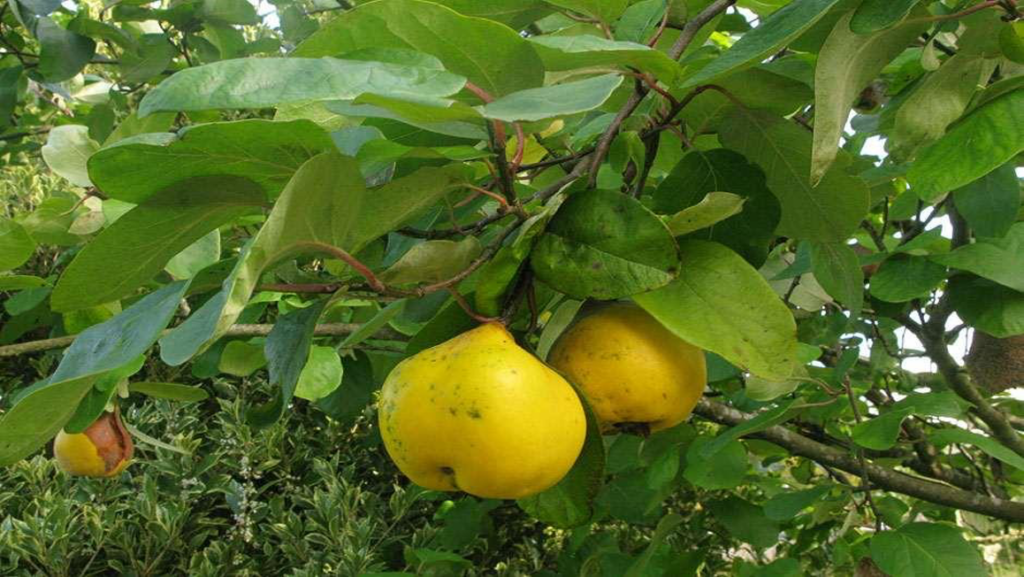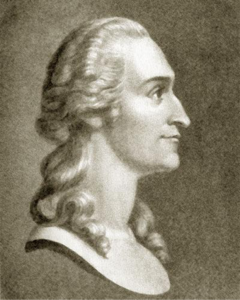Autumn song
(Poet's title: Herbstlied)
Set by Schubert:
D 502
[November 1816]
Bunt sind schon die Wälder,
Gelb die Stoppelfelder,
Und der Herbst beginnt.
Rote Blätter fallen,
Graue Nebel wallen,
Kühler weht der Wind.
Wie die volle Traube
Aus der Rebenlaube
Purpurfarbig strahlt.
Am Geländer reifen
Pfirsiche mit Streifen
Rot und weiß bemahlt.
Sieh, wie hier die Dirne
Emsig Pflaum und Birne
In ihr Körbchen legt,
Dort mit leichten Schritten
Jene goldnen Quitten
In den Landhof trägt.
Flinke Träger springen,
Und die Mädchen singen,
Alles jubelt froh!
Bunte Bänder schweben,
Zwischen hohen Reben,
Auf dem Hut von Stroh!
Geige tönt und Flöte
Bei der Abendröte
Und im Morgenglanz.
Junge Winzerinnen
Winken und beginnen
Deutschen Ringeltanz.
The woods are already bright with colour
The stubble fields are yellow,
And autumn is beginning.
Red leaves are falling,
Grey mist is swirling,
The wind is cooler as it blows.
How the swollen grapes
Behind the vine leaves
Are glowing, coloured crimson;
Ripening on the railings
Are peaches with stripes
Coloured red and white.
Look at how this girl here
Is busying herself with the plums and pears,
Laying them in her basket;
Over there, with light steps
Another one is taking golden quinces,
Carrying them to the farmyard!
Speedy porters are jumping,
And the girls are singing,
Everyone is rejoicing happily!
Bright ribbons are fluttering
Between tall vines
On straw hats!
Fiddles and flutes can be heard
At sunset
And in the glow of the morning;
Young vintners
Wave and start
A German round dance.
All translations into English that appear on this website, unless otherwise stated, are by Malcolm Wren. You are free to use them on condition that you acknowledge Malcolm Wren as the translator and schubertsong.uk as the source. Unless otherwise stated, the comments and essays that appear after the texts and translations are by Malcolm Wren and are © Copyright.
☙
Themes and images in this text:
Autumn Baskets Cold Colour (general) Corn and cornfields Dancing Emptiness and fullness Evening and the setting sun Fields and meadows Fruit Germany and being German Gold Grey Harvest Hats Leaping and jumping Leaves and foliage Mist and fog Pipes and flutes Red and purple Ribbons Rising and falling Songs (general) Stringed instruments (unspecified) White Wind Wine and vines Woods – large woods and forests (Wald) Workers and working songs Yellow
There is a spring in the step and in the rhythm here. Salis-Seewis used the same dance-like verse form for two other ‘working’ songs which Schubert also set to music: Pflügerlied (D 392) and Fischerlied (D 351, D 364, D 562). In all three texts working people are presented as being totally fulfilled by their honest, down-to-earth efforts.
Although the weather is turning chilly and grey mist is swirling, the over-riding impression is of happy workers in a colourful, overflowing environment. The colours (yellow, red, white, gold, crimson as well as grey) are vivid (‘bunt’) and the fruit that is being picked is deliciously specific (grapes, peaches, plums, pears and quinces). The rather obvious ‘Dirne’ / ‘Birne’ (working girl / pear) rhyme is used to make the less than subtle point that ripeness is connected with fertility (‘she’s got a lovely juicy pear’!). Swelling grapes go along with swelling bodies. Look at those quinces!

☙
Original Spelling and note on the text Herbstlied Bunt sind schon die Wälder; Gelb die Stoppelfelder, Und der Herbst beginnt. Rothe Blätter fallen, Graue Nebel wallen, Kühler weht der Wind. Wie die volle Traube, Aus dem Rebenlaube, Purpurfarbig strahlt; Am Geländer reifen Pfirsiche mit Streifen Roth und weiß bemahlt. Sieh! Wie hier die Dirne Emsig Pflaum' und Birne In ihr Körbchen legt; Dort, mit leichten Schritten, Jene goldnen Quitten In den Landhof trägt! Flinke Träger springen, Und die Mädchen singen, Alles jubelt froh! Bunte Bänder schweben, Zwischen hohen Reben, Auf dem Hut von Stroh! Geige tönt und Flöte Bei der Abendröthe Und im Morgenglanz1; Junge Winzerinnen Winken und beginnen Deutschen Ringeltanz. 1 Schubert changed 'Mondenglanz' (the glow of the moon) to 'Morgenglanz' (the glow of the morning)
Confirmed by Peter Rastl with Schubert’s source, Gedichte von J.G. von Salis. Neue Auflage. Zürich, bey Orell Füßli und Compagnie. 1808, pages 3-4; with Gedichte von J. G. von Salis. Gesammelt durch seinen Freund Friedrich Matthisson. Zürich, bey Orell, Gessner, Füssli und Compagnie. 1793, pages 53-54; and with Gedichte von J. G. von Salis. Neueste Auflage. Wien 1815. Bey B. Ph. Bauer, pages 3-4.
First published in a rather different version with 7 stanzas in Hamburger Musenalmanach 1786
To see an early edition of the text, go to page 3 [17 von 192] here: http://digital.onb.ac.at/OnbViewer/viewer.faces?doc=ABO_%2BZ160622604


